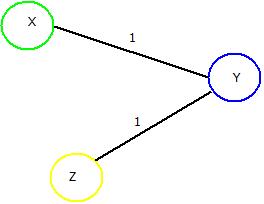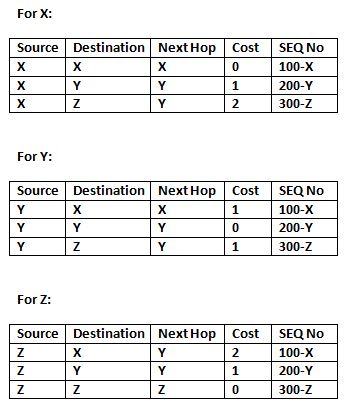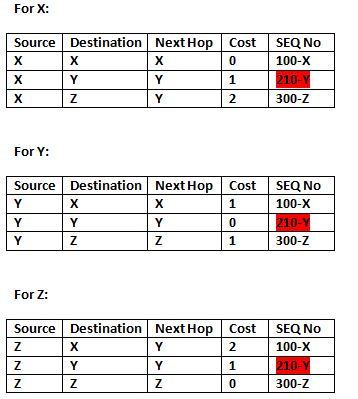Destination Sequenced Distance Vector Routing (DSDV) : Introduction
- Destination Sequenced Distance Vector Routing protocol is a modified version of Bellman Ford Algorithm and is based upon the concepts of Distance Vector Routing.
- In Distance Vector Routing(DVR), each node broadcasts a table containing its distance from nodes which are directly connected and based upon this, other nodes broadcasts the updated routing. Those nodes which are unreachable directly are labelled as “infinite”.
- But, this updation of routing tables keeps on happening and an infinite loop is generated which is commonly known as Count-To-Infinity problem.
- To overcome this problem of count to infinity by generating sequence number in the routing table, every time the routing table is updated. The process of DSDV is same as that of Distance Vector Routing but an extra attribute of sequence number is added.
Destination Sequenced Distance Vector Routing : Concept
- DSDV protocol uses and maintains a single table only, for every node individually. The table contains the following attributes.
- Routing Table : It contains the distance of a node from all the neighboring nodes along with the sequence number( SEQ No means the time at which table is updated).
Destination Sequenced Distance Vector Routing : Format
- This table is updated on every step and ensures that each node broadcast as well as receives correct information about all the nodes including their distance and sequence number.
Destination Sequenced Distance Vector Routing Protocol : Working
- In DSDV, nodes broadcasts their routing tables to immediate neighbors with the sequence number. Every time any broadcasting occurs, the sequence number is also updated along with distances of nodes.
- Consider a network of 3 nodes having distances of “1” on each of the edges respectively. Below mentioned steps will let you know how DSDV works and routing tables are updated.

Destination Sequenced Distance Vector Routing : Sample Network
- Step-1: Draw separate tables for all the nodes “X”, “Y” & “ Z” along with the distance and sequence number.

- If “Y” wants to broadcast the routing table. Then updated routing tables of all the nodes in the network will look like as depicted in the below tables where red marked cell denotes the change in sequence number.

Advantages : Destination Sequenced Distance Vector Routing Protocol
- Can’t be implemented commercially or on larger scale.
- Efficient results will be produced if applied on small networks.
Disadvantages : Destination Sequenced Distance Vector Routing Protocol
- Slower protocol processing time.
- Less bandwidth.
- Not suitable for large number of networks which are dynamic in nature.